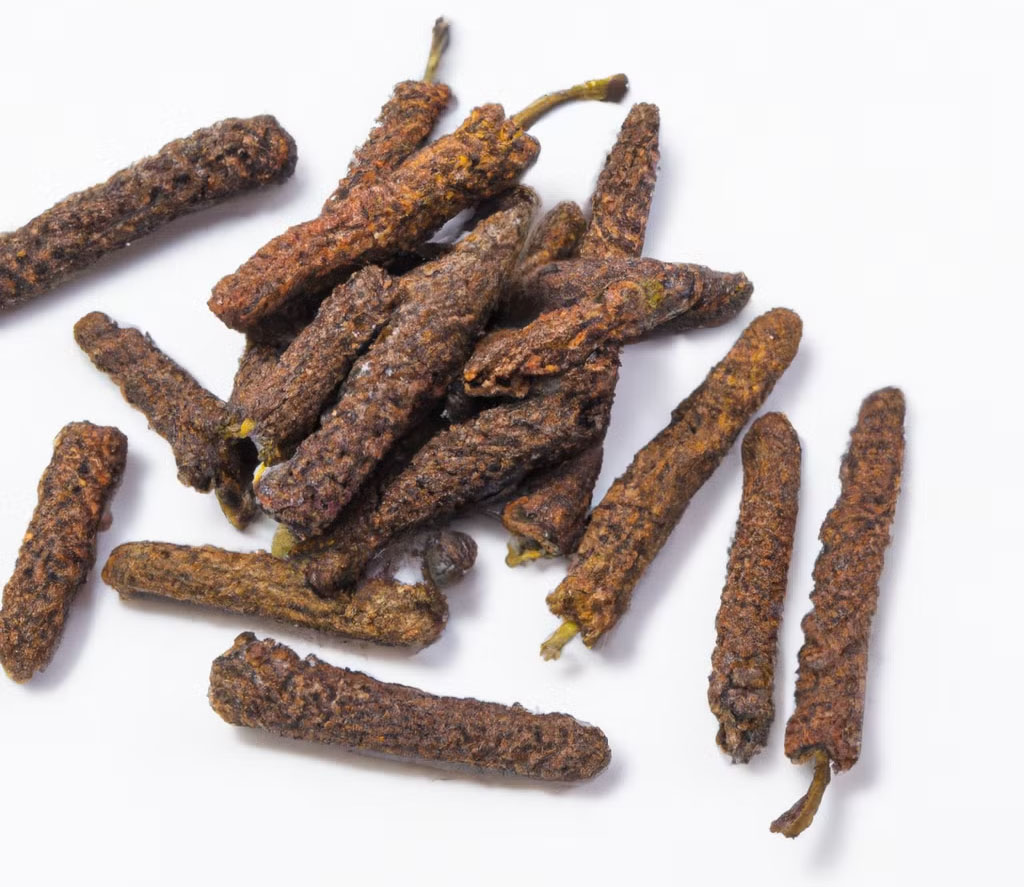Botanical Name: Piper longum
Long peppercorns are a unique and ancient spice used for thousands of years in Indian, Mediterranean, and Southeast Asian cuisines. Despite being less commonly used today than its cousin, black pepper (Piper nigrum), long pepper holds a special place in culinary history, especially in ancient Roman cooking.
Resembling tiny catkins or elongated, wrinkled cones, long peppercorns have a more complex flavor than black pepper. They possess a warm, earthy heat that is intertwined with notes of sweetness reminiscent of cinnamon, cardamom, and nutmeg. The spice delivers an initial sharp heat that is followed by subtle sweet, floral, and even smoky undertones, creating a lingering, multifaceted taste experience. This complexity makes long pepper an exciting alternative to regular black pepper in various dishes, providing layers of flavor beyond simple heat.
Long pepper is highly versatile in the kitchen and can be used in both sweet and savory applications. It works wonderfully in curries, stews, and spice blends, enhancing meat and vegetable dishes with its distinctive warmth. In Indian cuisine, long pepper is a key ingredient in certain spice mixes and chutneys, while in Southeast Asian cooking, it’s sometimes used in soups and braises to impart a rich, peppery depth. It was often paired with honey, fruits, and wine in ancient Roman and medieval European kitchens, showcasing its versatility in sweet preparations. Today, it can add an exotic twist to desserts like poached pears or chocolate-based dishes, where its sweetness and heat harmonize beautifully.

